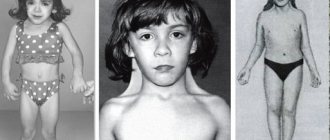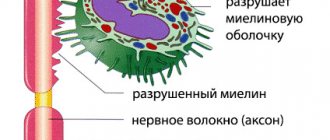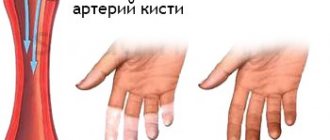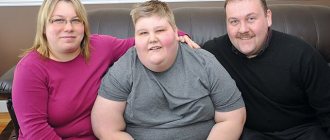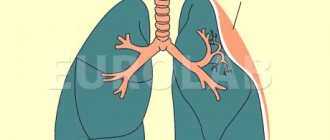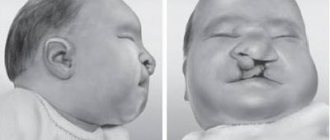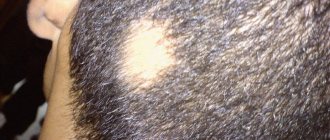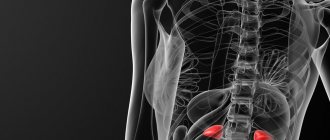Apnea syndrome is a pathology, the main manifestation of which is short-term cessation of breathing during sleep. Breathing pauses lead to oxygen starvation. Hypoxia and accompanying hypercapnia.
- Endocrinopathies - obesity, thyroid dysfunction, diabetes mellitus;
- Pathology of the ENT organs - nasopharyngitis, tonsillitis;
- Oncological diseases - tumors in the upper respiratory tract;
- Congenital anomalies of the respiratory organs, narrowing their lumen;
- Muscle hypotonia caused by taking medications or alcohol
- Diseases of the nervous system - encephalitis, meningitis, tumors, dyscirculatory disorders,
- Some psychosomatic factors.
Associated symptoms of the disease are: snoring, restlessness during sleep, daytime sleepiness, decreased performance. Patients with sleep disorders wake up unrested, overwhelmed, and irritated. Over time, these sensations intensify, constant fatigue increases, memory deteriorates, and intelligence suffers. This uncomfortable state leads to neuroses and depression. Apnea can also occur in healthy people. His episodes are short and rare. If they appear no more than 5 times per hour and last less than 10 seconds, this is considered normal and does not threaten health.
Sleep apnea syndrome is a common ailment that occurs mainly in older people, as well as in mature people 35-54 years old and even in young children. The disease most often affects older men and menopausal women.
Diagnosis of the syndrome due to the specific clinic does not cause difficulties. The etiology of apnea attacks must be determined by a doctor by performing polysomnography. In 5% of cases the syndrome is not diagnosed. Treatment of pathology includes non-drug treatment - oxygen therapy, the use of special devices and devices, as well as the use of certain medications. The type and extent of surgical intervention depends on the cause of the syndrome.
Symptoms of sleep apnea
Central and obstructive apnea have a number of differences, the main thing is that with CSA, the airway remains open, and respiratory arrest is caused by a change in the level of carbon dioxide or pH in the body.
Breathing impairment in OSA occurs due to narrowing of the airways at the level of the pharynx, the most common cause of which is considered to be obesity. The risk of developing apnea syndrome if you are overweight is 10 or more times higher.
In people with stage 3 obesity, disorders are present in more than 50% of cases. Also, during experiments in which 5 thousand people participated, a connection was established between attacks of retention and high blood sugar levels.
A respiratory pause in a sleeping person from 10 seconds to 3 minutes is considered pathological, it depends on the stage of apnea. Symptoms of CSA are practically absent; other people may notice holding your breath during sleep.
After this, the person begins to breathe frequently and deeply, possibly sweating heavily and waking up. Signs of OSA are divided into nighttime and daytime; during sleep, a person develops:
- loud or frequent (at least 3 times a week) snoring;
- noisy breathing and mouth breathing;
- cough or shortness of breath;
- increased sweating;
- disturbing sleep;
- frequent urination;
- rarely sleepwalking and enuresis.
During the day, a person with both forms of apnea feels all the signs of lack of sleep: constantly wants to sleep, there is lethargy, difficulty concentrating, irritability, aggression.
With OSA, a nasal tone in the voice, morning headache, and breathing through the mouth are often observed. Central apnea is considered more dangerous because its causes are more serious and hidden deeper, and the episodes last longer.
"The Curse of Ondine"
The article described many reasons that can cause sleep apnea. However, in some people the disease may occur without any reason. How does this happen? Against the background of complete health, a small child or adult develops snoring with episodes of respiratory arrest. These episodes can last significantly longer than in the classic course of the disease. In some cases, they end in death from strangulation.
This option is called Ondine's Curse syndrome or idiopathic hypoventilation. The exact cause of its occurrence is not known to this day. Scientists suggest that the syndrome is associated with congenital underdevelopment of the respiratory center or damage to the nerves that control the functioning of the respiratory muscles. Most often, it manifests itself in newborns or young children, but there are cases of late onset of the disease (at 30-40 years).
The Legend of Ondine. In German mythology, there is a story about the beautiful mermaid Ondine, who lived on the shore of a raging sea. A knight passing by her hut was amazed by the beauty and singing of the girl. Swearing to her with his morning breath, he won the heart of Ondine and married her. Over time, the knight forgot about his love and found a new object of desire. Seeing this, Ondine cursed her husband, depriving him of the ability to breathe during sleep, saving him only his “morning breath.”
The "Curse of Ondine" is a diagnosis of exclusion. It can only be determined after all other possible causes have been excluded. A distinctive feature of this pathology is the absence of any symptoms other than respiratory arrest and snoring. No diagnostic method can confirm its presence, so laboratory and hardware techniques are needed only to exclude other causes.
It is impossible to completely get rid of this disease. In severe cases, the patient has to fight for every breath all his life, since all respiratory movements are performed through an effort of will. Existing treatment methods do not affect the cause of hypoventilation syndrome and do not allow getting rid of it. The only way to maintain a decent quality of life for such patients is CPAP machines for BiPAP therapy.
Pathogenesis of sleep apnea
Sleep apnea begins to manifest itself after the muscles of the soft palate and pharynx relax. In this state, they begin to vibrate, causing the person to snore. With deep immersion in sleep, muscle tone completely disappears, the pharynx completely collapses, and an acute episode of suffocation develops. Due to a lack of oxygen in the arterial blood, a person experiences stress and blood pressure rises.
Next, the organs send a signal to the brain, which, partially awakening, opens the airways. After loud snoring, the sleeper begins to take deep breaths several times. Then the condition returns to normal, the brain falls asleep, and the episode of apnea repeats. During the night there may be 400-500 such cases.
Consequences
With timely, adequate therapy, the disease resolves without negative consequences, and the prognosis is favorable. If the disease is not treated, such sleep apnea leads to long-term complications:
- hypertension, which provokes the development of stroke;
- acute cerebral circulatory disorder;
- various forms of heart failure;
- angina pectoris, myocardial infarction;
- sexual dysfunction;
- loss of ability to work, up to disability status.
Classification and stages of development of sleep apnea
Obstructive apnea can occur in 3 degrees of severity, mild is characterized by 5 to 15 respiratory arrests, moderate 15-30, severe more than 30. In the case of CSA, patients are divided into those who have:
- hypercapnia;
- hypocapnia;
- Cheyne-Stokes breathing.
In the first case, before an attack, people begin to breathe rarely and shallowly, which provokes an increase in carbon dioxide levels. This group includes patients with dysfunction of the medulla oblongata and hypothyroidism.
The second category is people whose carbon dioxide levels, on the contrary, fall. This happens due to their frequent breathing at night. The body of patients with hypocapnia purposefully blocks breathing to prevent hyperventilation.
The third group of people has similar breathing to patients with hypocapnia, but stands out as a separate group due to the fact that the causes of the disorders are severe conditions such as:
- diabetic coma;
- severe head injuries with cerebral hemorrhages;
- hemorrhagic strokes;
- severe intoxication due to various infectious processes.
Cheyne-Stokes breathing in such situations does not bode well; it mainly occurs when treatment is unsuccessful. It is also worth highlighting people who have breathing problems due to frequent use of opioids.
CPAP therapy
The consequences of sleep apnea can make themselves felt even with properly adjusted therapy. It happens that during the period of active treatment of the disease, oxygen deficiency still remains in organs and tissues.
CPAP therapy is used to saturate the body's tissues with oxygen . To carry it out, a person wears a special mask that supplies oxygen under pressure. The oxygen itself is supplied from a CPAP machine connected to the face mask by air tubes.
The device does not take up much space, so it can be used to treat apnea right in your home. Read about how else you can treat apnea at home.
CPAP equipment is not cheap, but given that apnea increases the risk of stroke or heart attack, purchasing a CPAP device is a necessary measure for your health.
Complications of sleep apnea
Apnea is a rather serious pathology, since attacks provoke all sorts of disorders in the body; complications of the syndrome include:
- headache;
- high fatigue;
- falling asleep during the day;
- weight gain;
- high anxiety;
- memory impairment;
- high blood pressure;
- diabetes;
- heart attack;
- stroke.
Hypoxia, atrial fibrillation, neurotic conditions, and cardiovascular pathologies may occur. The most dangerous thing is that attacks of suffocation can cause cardiac arrest during sleep.
Diagnosis of sleep apnea
Before diagnosing OSA, the doctor examines the patient’s medical history and asks questions about lifestyle and bad habits. Next, the person will need to donate blood, undergo an ECG, have an X-ray of the lungs, and computer pulse oximetry to examine respiratory functions.
Afterwards, the specialist gives a referral for polysomnography. A separate room is allocated for the procedure; recording is carried out while the person is sleeping.
Special equipment with sensors allows you to assess the degree of the syndrome. Indicative for diagnosis is the apnea-hypopnea index, i.e. the number of breath holds or breathing disorders per hour.
The sensors also record parameters of the movements of the eyeballs and legs, electrocardiogram, body position, electroencephalogram, electromyogram, and blood oxygen saturation. The data obtained are the basis for choosing treatment tactics.
The specialist you need to visit
After scientists realized the seriousness of the mechanisms of sleep disorders, a separate science was formed - somnology. A doctor who treats snoring and sleep apnea at night is called a somnologist. The specialist examines the problem from the perspective of otolaryngology, pulmonology, and neurology, and makes a final diagnosis.
When initially visiting the clinic, a person is referred for a consultation with a therapist. It is this doctor who collects anamnesis, conducts an examination, prescribes tests, and methods for diagnosing sleep apnea. After all the research, he decides whether to refer him to a somnologist.
Treatment for sleep apnea
There are many causes of sleep apnea, treatment is determined by them, it can be medicinal or surgical. Patients with Cheyne-Stokes breathing require special attention. To relieve symptoms, patients with CSA may need:
- oxygen therapy;
- CPAP therapy (also suitable for obstructive apnea);
- electrical stimulation of the phrenic nerves.
In the treatment of obstructive syndrome, corticosteroids, medications used for norcolepsy, nasal drops and sprays that moisturize the mucous membrane are used. The drug Slipex is often prescribed; it is sprayed onto the back of the throat before going to bed. Duration of treatment is from 30 days. Therapy is also possible:
- Silence;
- Doctor Snoring;
- MySleepGood;
- SnorStop.
All medications are prescribed exclusively by a specialist; independent use can be dangerous. It is believed that the drugs are effective only for mild OSA or in combination with other procedures, with the exception of CAS therapy aimed at stimulating the respiratory center.
Patients can be prescribed mouthguards that allow the lower jaw to move forward, allowing a person to breathe correctly at night. For mild to moderate cases, it is possible to use the “Extra ENT” device, which is similar in appearance to a pacifier for children.
Its task is to irritate the muscles of the tongue and increase the tone of the soft palate. Extra-ENT is not used only for difficult nasal breathing.
The operation is performed when absolutely necessary, such as anatomical defects in the oropharynx and nose or the failure of other treatment methods. The procedure can be as follows:
- laser therapy;
- radio frequency exposure;
- cryoplasty;
- injections.
The procedures cause minor damage to the soft palate, which becomes denser over time. The techniques help eliminate snoring and mild apnea; they are ineffective at stage 2, without combination with other types of treatment, and for patients with stage 3, surgery may not only not help, but can also cause serious complications.
Surgical treatment is not effective if the syndrome is caused by disorders of the central nervous system.
Treatment process
Treatment of sleep apnea syndrome is complex. It is aimed at eliminating the main causative factors through non-pharmacological, medicinal and surgical interventions.
Expert recommendations for minor sleep disorders:
- Sleeping on a high pillow and on your side allows you to relieve stress from the muscles of the pharynx,
- Using decongestants before bed to relieve nasal congestion
- Early detection and treatment of sinusitis, tonsillitis, nasopharyngitis,
- Fighting obesity
- Avoiding alcoholic drinks in the evenings
- Avoid taking sedatives in the afternoon.
Meditation and massage will help you relax before bed. It is better for patients not to watch TV immediately before bed and not to read a book in bed. It is advisable to reduce noise and dim the lights in the bedroom.
The most effective therapeutic measures:
- Hardware treatment is the use of clamps and masks that are inserted into the oral cavity to advance the jaw and hold the tongue in a position that leaves the airway open. The mandibular splint ensures free breathing for a sleeping person. Nose flares, by supporting the wings, increase the space for air flow.
- Drug therapy consists of prescribing local corticosteroids. If apnea syndrome is a manifestation of bronchopulmonary diseases with airway obstruction, the underlying pathologies are treated. Pulmonologists individually select a treatment regimen for each patient. They are usually prescribed antibiotics, bronchodilators, mucolytics, expectorants and anti-inflammatory drugs. Drugs that relieve obstruction and relieve asthma attacks are used topically in the form of an aerosol through a nebulizer. All patients without exception are prescribed long-acting theophyllines, cerebral circulation correctors, and moderate-acting sedatives.
- Surgery is indicated for patients with an abnormal structure of the respiratory tract. In the presence of adenoids, deviated septum or hypertrophied tonsils, adenoidectomy, septoplasty, tonsillectomy, and laser plastic surgery of the soft palate are performed. These operations make it possible to cope with the main etiological factors of the syndrome.
- To eliminate the disease, a special method was developed - CPAP therapy. It is prescribed when frequent and prolonged attacks of apnea practically prevent patients from sleeping and significantly worsen their overall well-being. A special device in the form of a mask that covers the patient’s mouth and nose supplies air into the respiratory tract. This manipulation does not allow soft tissues that are relaxed during sleep to sag and collapse. A silent mask helps the patient breathe and prevents collapse during sleep. This hardware treatment method is considered one of the most effective.
CPAP therapy
- Traditional medicine to help cope with apnea: fresh cabbage juice with honey and baked carrots. By regularly consuming these foods, you can reduce the symptoms of the disease. It is useful to drop sea buckthorn oil into the nose to ease breathing.
Video: non-surgical treatment of sleep apnea
Video: surgical treatment of apnea
Treatment of apnea with folk remedies
Alternative medicine is not clinically proven, however, many doctors support patients who use it. The main thing is that the therapy should be in combination with the main treatment and after consultation with a specialist. To eliminate the syndrome, people use the following recipes.
| Drops of their St. John's wort Drops are made from the plant and placed in the nose before bed. For the medicine you will need 200 ml of purified vegetable oil and 1 large spoon of dry St. John's wort. The mixture should stand for 14 days in a dark place before use. |
| Sea buckthorn oil The drug can be purchased ready-made or made independently. To do this, mash 2 large spoons of berries, add the same volume of vegetable oil and leave for 14-21 days. |
| Cabbage with honey To make the medicine you will need white cabbage and honey. The vegetable leaves are passed through a meat grinder or juicer to obtain 1 glass of juice. On average, 2 kg of cabbage yields 1 liter. You can cut and mash the leaves by hand, but then the resulting juice will be less. The liquid is diluted with 1 small spoon of honey and consumed before bedtime for a course of 21-28 days. |
| Salt bath course The procedures are carried out in courses, these are 15-20 baths. Duration of reception is no more than 20 minutes. It is advisable to use sea salt without additives. Salt water can also be dropped into the nose before bed to moisturize the mucous membrane. |
To stop rolling over on your back in your sleep, people came up with the idea of sewing a pocket to their pajamas and putting a ball or other object there. It was noticed that after 3-4 weeks a person develops a conditioned reflex, and he begins to constantly sleep on his side.
Exercises to treat apnea
The exercises are aimed at training the muscles of the pharynx, lower jaw and tongue, this promotes the normal passage of air and protects them from collapsing. The classes do not require effort or special preparation, so you can do them during the day at any convenient time:
- Exercise 1. It is necessary to stick out and lower your tongue as far as possible. Next, pull out the letter “i” for 2 seconds, then hide it back. It is recommended to repeat the action twice a day 30 times.
- Exercise 2. It is necessary to push the lower jaw forward in the same frequency and quantity as in the first exercise. Resistance is created using a fist.
- Exercise 3. You need to squeeze the handle in your teeth and hold it for 3-4 minutes.
- Exercise 4. Perform circular movements with the lower jaw 15 times in each direction.
- Exercise 5. It is necessary to press with all your strength for several seconds with the tip of your tongue on the upper palate.
Whistling helps to get rid of snoring; it is recommended to perform this action with your head thrown back up and, if possible, in the fresh air.
Additional recommendations
If you have sleep apnea, there are some tips you should follow. In practice, there have been cases where, thanks to them, patients completely got rid of the syndrome without the use of drugs. People need:
- get rid of bad habits;
- stop sleeping on your back;
- do not overeat before bedtime;
- do not sleep without a pillow;
- normalize weight;
- do not take medications that cause relaxation of smooth muscles unless absolutely necessary;
- ensure normal nasal breathing.
It is useful to take baths, massage, breathe lavender and peppermint essential oils. If possible, you need to arrange a quiet hour for yourself, and it is better to sleep half-sitting. Before going to bed, it is recommended to ventilate the room and humidify the air.
? Ctrl+Enter
Prevention
Following the rules below will help reduce the symptoms, and in some cases even completely cure sleep apnea:
- Body weight control. Losing weight by 5–10% improves oxygen permeability by 50–60%.
- Sleep on your stomach or side. When a person lies on his back, his tongue falls in, thereby blocking the airway.
- An elevated position of the head prevents snoring and the tongue from falling inward. Raising the pillow too high is not recommended, as this will lead to the opposite effect.
- Taking hormonal medications will help women suffering from age-related changes.
- Avoiding the use of sedatives and relaxing herbal infusions.
- Elimination of bad habits.
- Using special suction cups for snoring.
- Providing easy nasal breathing. Chronic nasal congestion requires immediate treatment from an ENT doctor.
In addition, it is important to ensure the most comfortable conditions and peace: eliminate all unnecessary sounds, avoid TV and computer before bed, use a dark blindfold.
